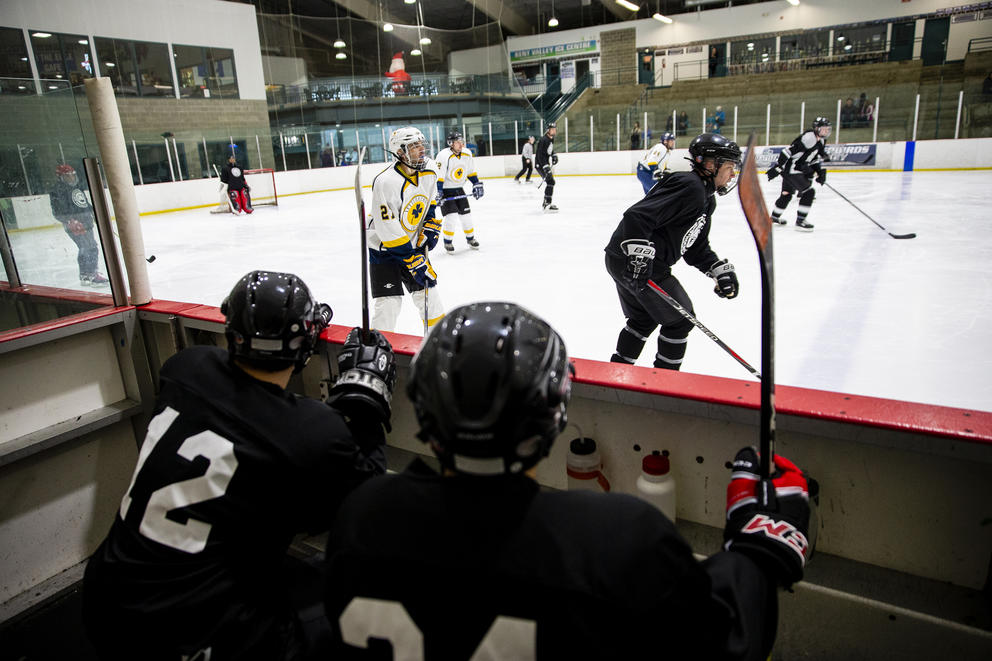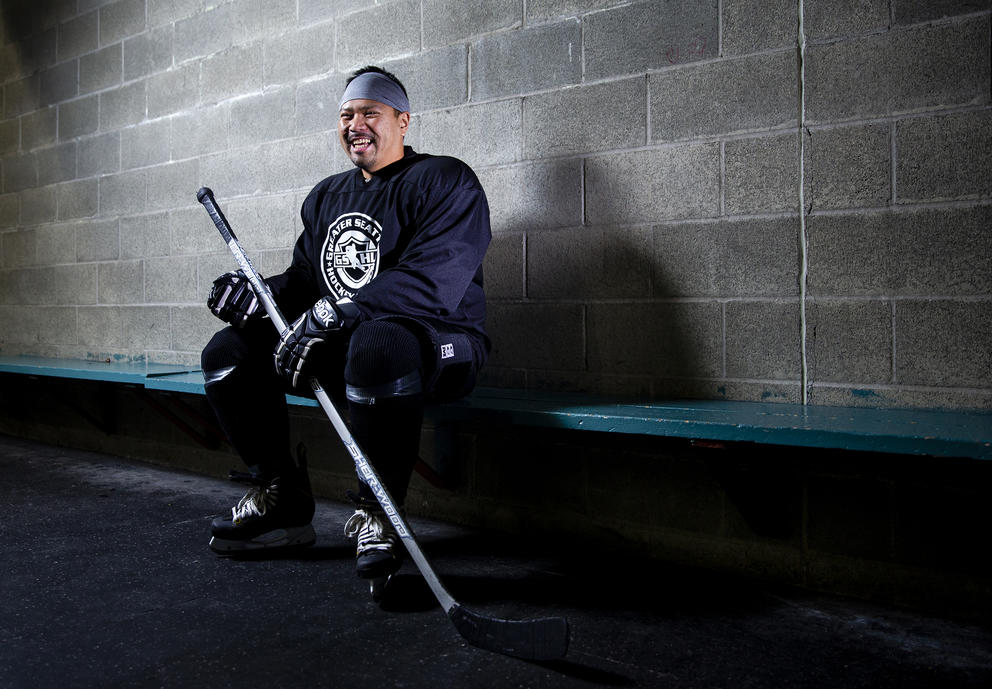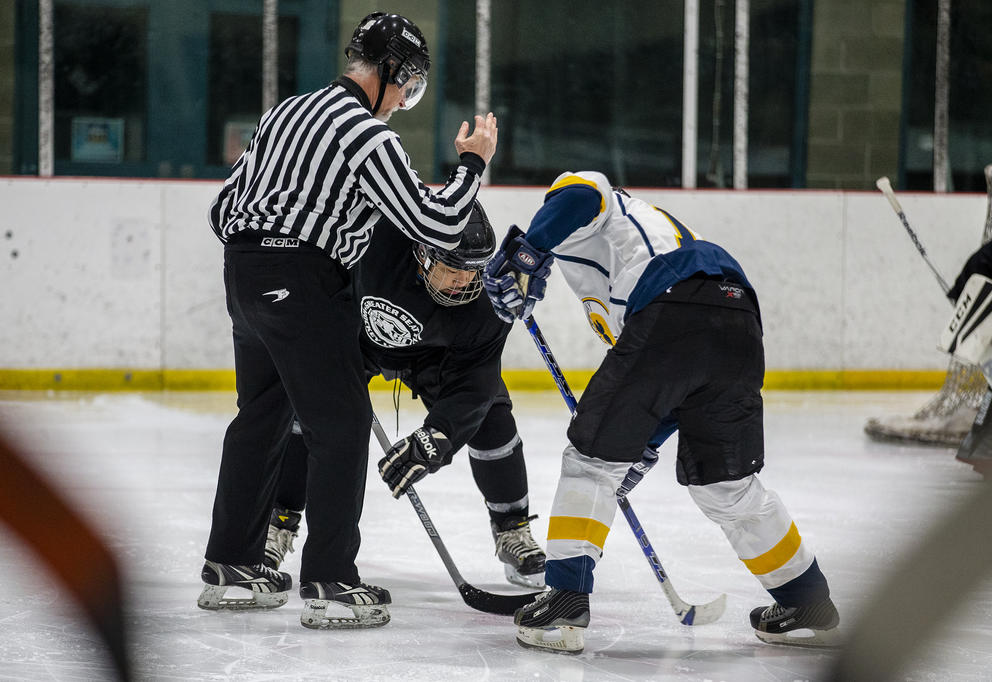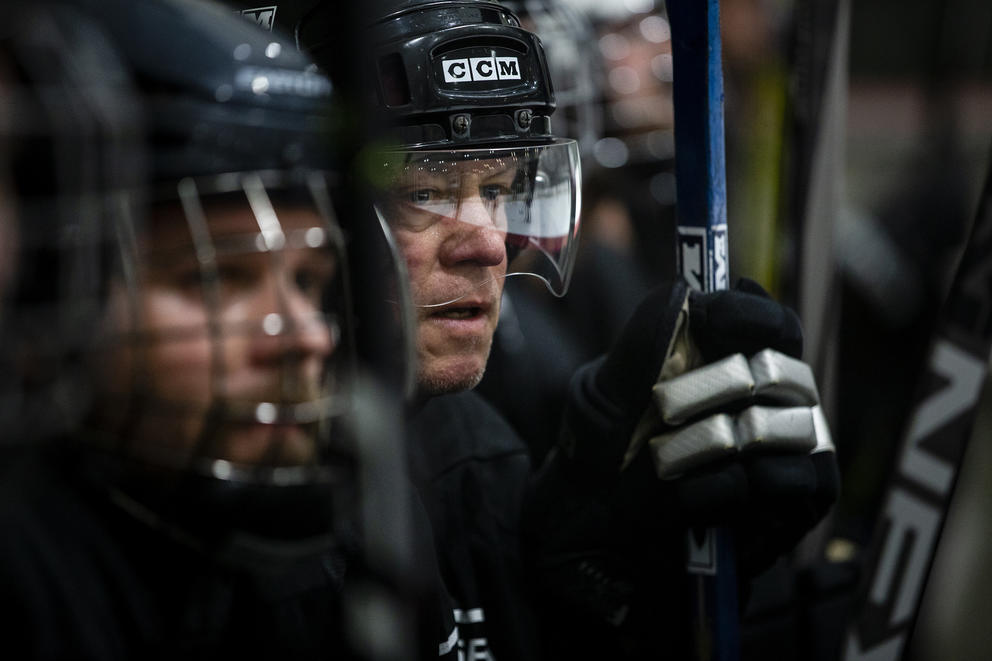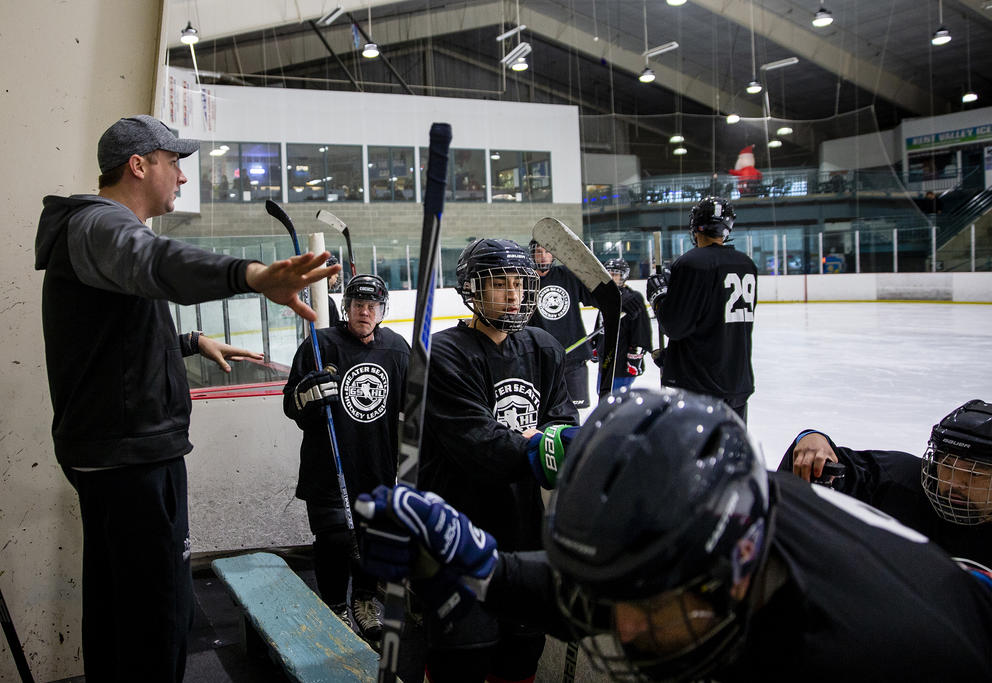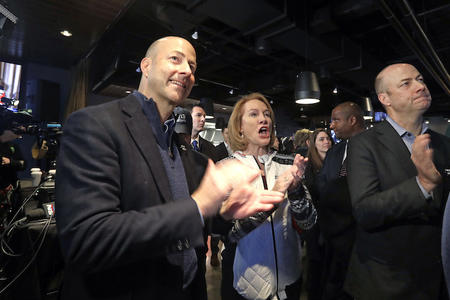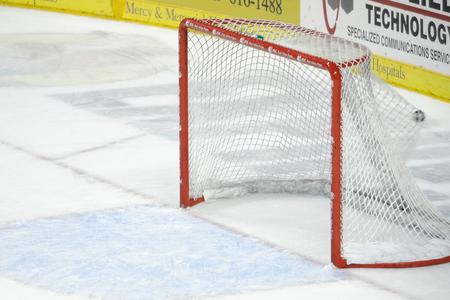Some excitedly pushed for “The Kraken,” while others suggested that “The Totems” or “The Sockeyes” would be the best choice. It was a normal enough topic for a group of hockey players. But it was especially relevant for this group, given that some of the players had actually joined the coed league in response to the recent announcement that the National Hockey League would be coming to Seattle.
“The news of Seattle, my new home, getting an NHL team brought my love of hockey to a whole new level,” said Reiner Blanco, 42, who is from Manitoba, Canada. Although a longtime hockey fan, he said the announcement spurred him to start playing for the first time in his life.
After a year of planning and deliberating, the NHL Board of Governors officially voted in favor of the Seattle expansion franchise earlier this month, setting a start date of 2021. The decision is momentous for the city, which hasn’t had a professional hockey team in about a century, and for what appears to be a rapidly budding fan base. When NHL was testing the waters earlier this year, it managed to secure 10,000 season ticket deposits in just 12 minutes.
It is also big news for the area’s recreational and youth hockey industry.
Mere days into a remodel of KeyArena, where the team will play, and still a ways away from getting a general manager or even a team name, the attention and excitement surrounding the new hockey team is already proving a boost to the industry.
The Trash Pandas is only one of four new teams just added by the Greater Seattle Hockey League (GSHL), the city’s largest adult recreational ice hockey league, because of the recent increase in interest and participation. Andy Cole, league manager, said GSHL is in the middle of its season — typically a quiet time when it comes to adding new players — but each time there has been a new development in the city’s bid for an NHL team he receives handfuls of emails, phone calls and applications from prospective players.
“Normally I’d only get a new player during this time of the year trying to jump in one or two [times] a week. Now I’m getting 12 in just the last week,” he said.
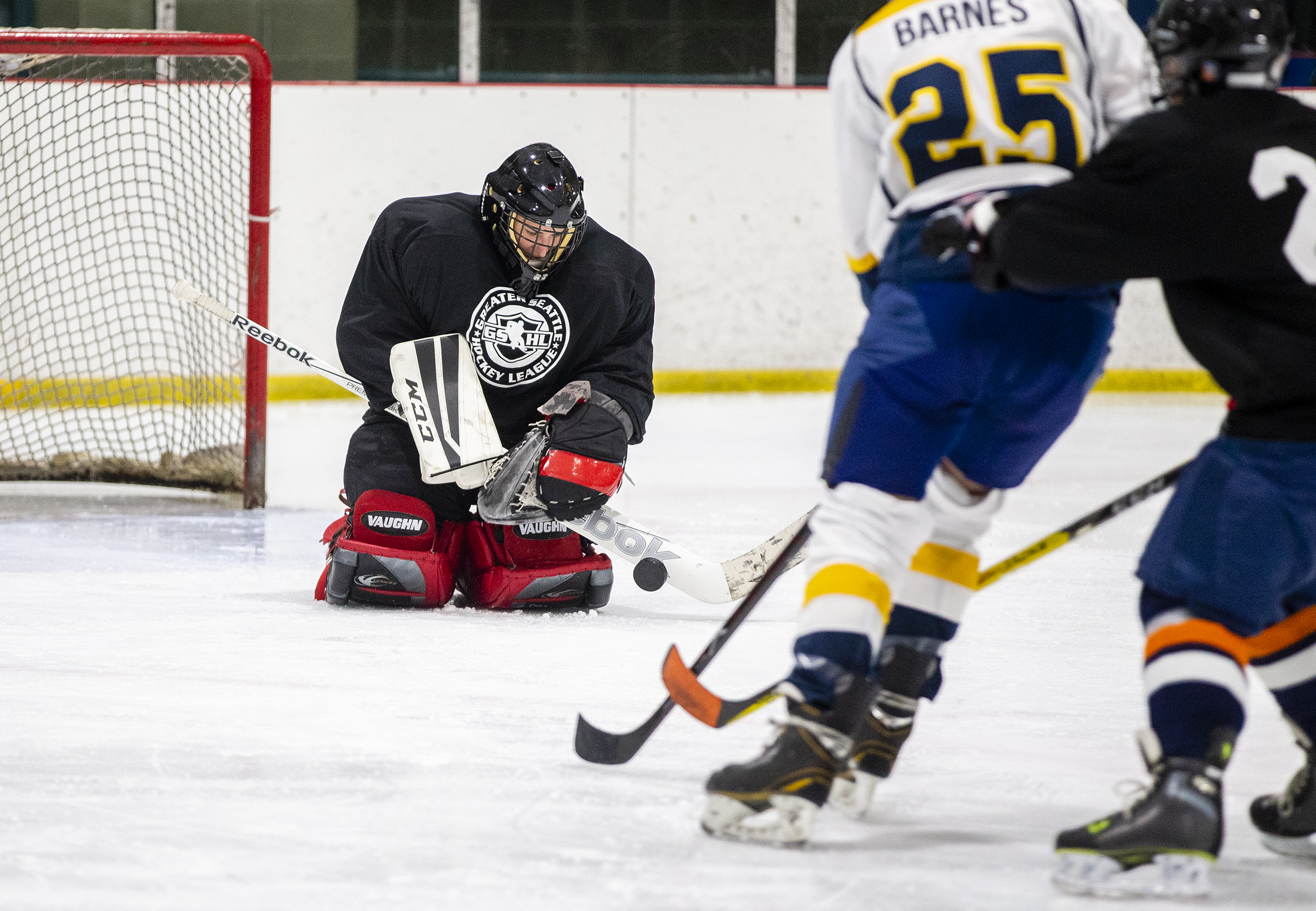
Chris Weaver, director of hockey operations at Tacoma Twin Rinks, said participation in its beginners program recently jumped from 10 to 60 children. Weaver is now looking to hire more coaches to accommodate all of the new players and recently launched an Adult Learn to Play program because of all the interest.
But if any of the previous U.S. cities that have added NHL teams are any indication, this is just the beginning of a growth spurt for recreational hockey in Washington. When Florida added the Tampa Bay Lightning and Florida Panthers to its hockey roster in the early 1990s, the state saw its total number of registered players increase by more than 2,000 over the next four years, according to USA Hockey. Even a state already steeped in hockey culture benefits from a pro team. After Minnesota got the Wild in 2000, the number of registered players in the state increased by more than 3,000 over four years.
This increased interest has also prompted some markets to build more ice rinks. For example, after Arizona got the Coyotes in 1996 and saw its collection of hockey players swell dramatically, at least six new ice rinks opened in the state.
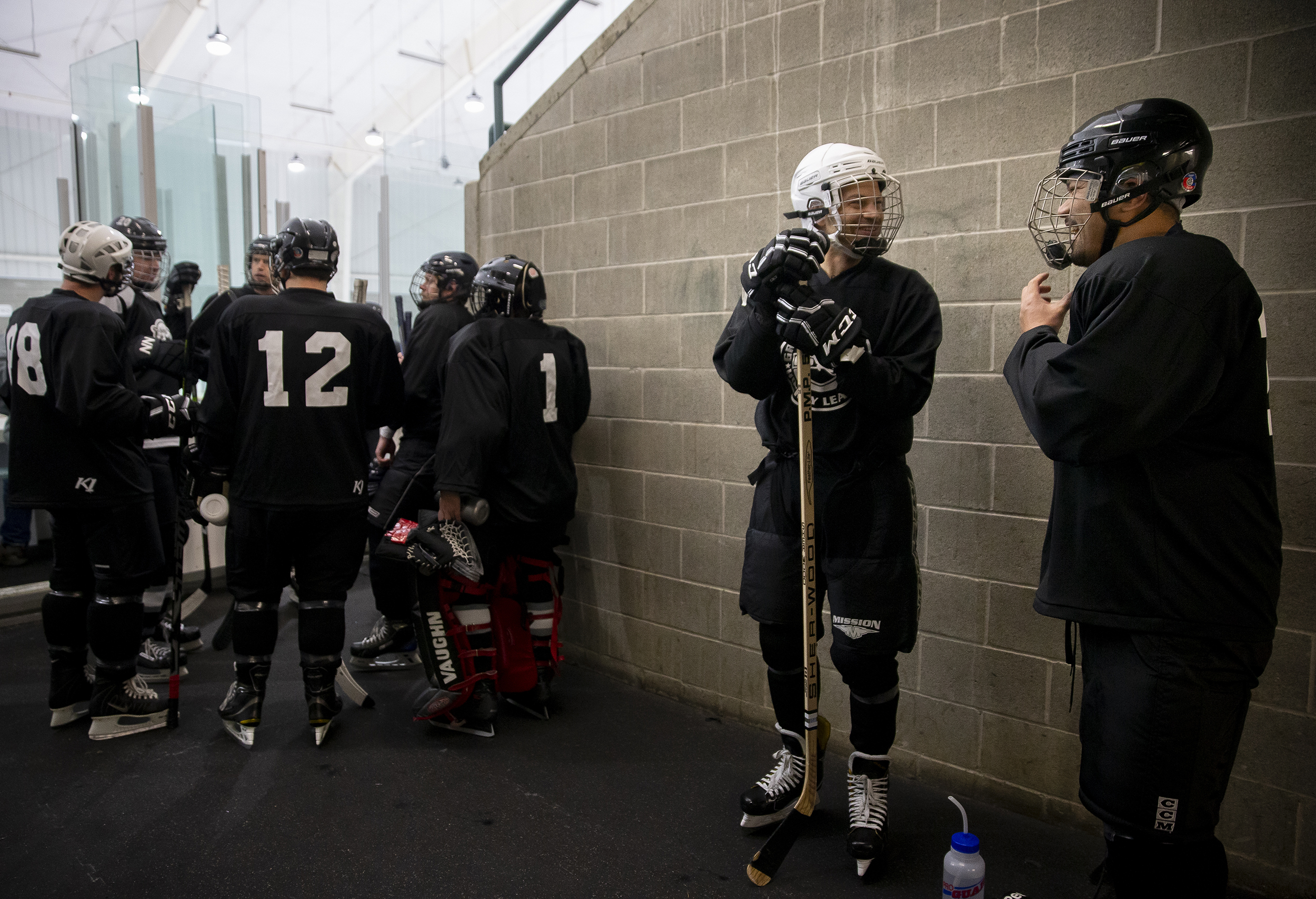
Washington already has nearly 10,000 registered players.
With about two-dozen rinks in the state, some groups are already struggling to find enough ice for all of their players. For example, the GSHL doesn’t have official practices for individual teams because there’s not enough ice.
There are already plans across the region to increase ice capacity. In addition to the revamped Seattle Center arena, NHL Seattle plans to build three new ice sheets in Northgate. While one will primarily be for the professional team’s practices, the others will be for public use and likely accommodate hundreds of players.
Cole, also commissioner of the coed Metropolitan Hockey League, which serves youth hockey players across the state, said the league will try to figure out the best way to organize games on the new ice so that all players in the area get the chance to compete there.
Tacoma Twin Rinks is also building a new rink, which should be open by next year, and Kent Valley Ice Centre is working to add a second sheet to its facility, according to Cole.
Sno-King Amateur Hockey Association, a youth hockey organization for players on the Eastside, currently has ice arenas in Renton and Kirkland. Dave Blanchard, its executive director, said the association has discussed adding a new rink to make room for the expected surge in the number of children who want to play.
Whether the increased capacity will keep pace with demand is yet to be seen. But ultimately, these developments are a clear boost to Washington’s latest growth industry.
“The good publicity and the buzz and the excitement is all good stuff,” said Cole. “Hockey’s been kind of under the radar for most of the time and all of a sudden it’s at the forefront.”

